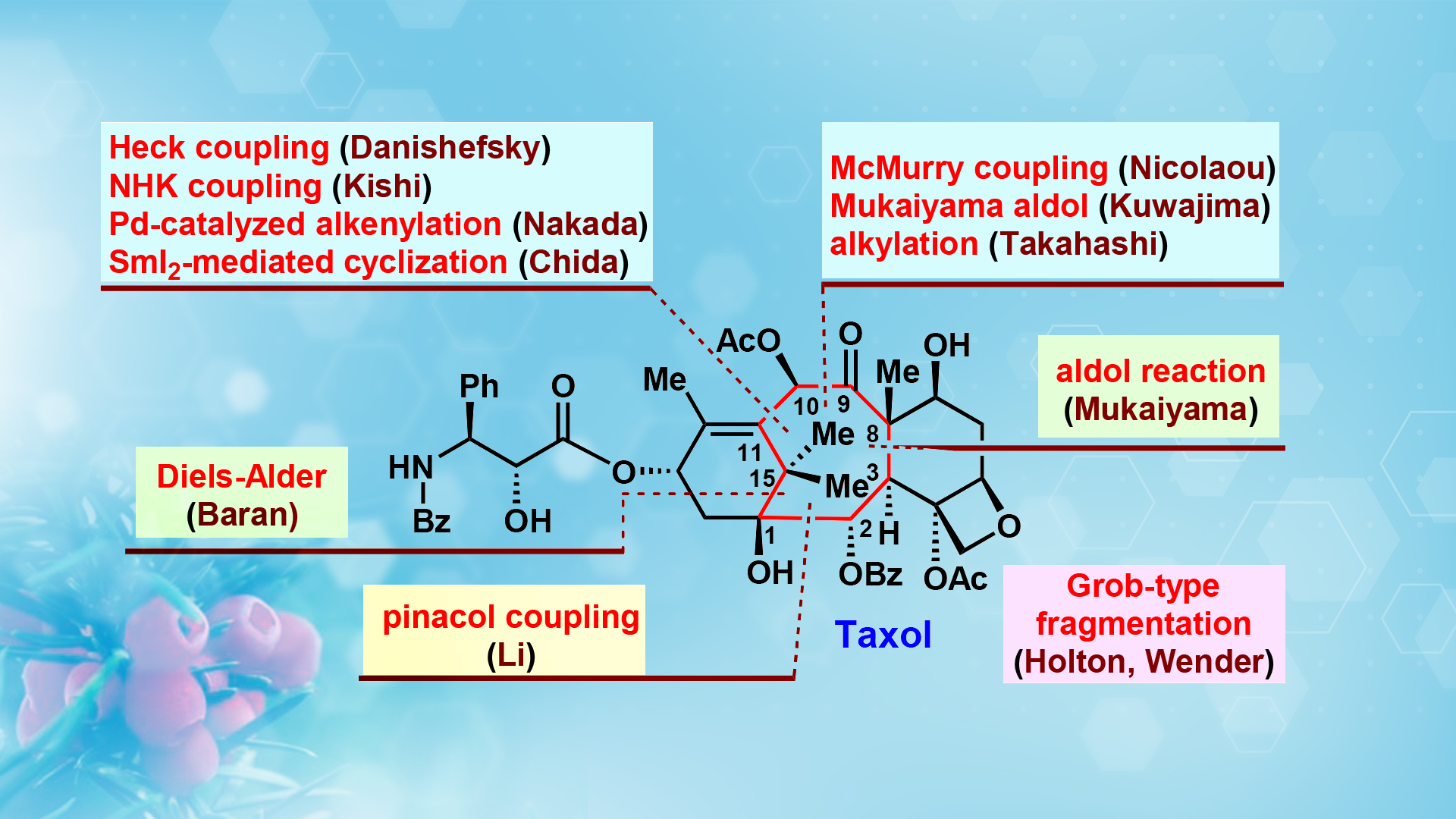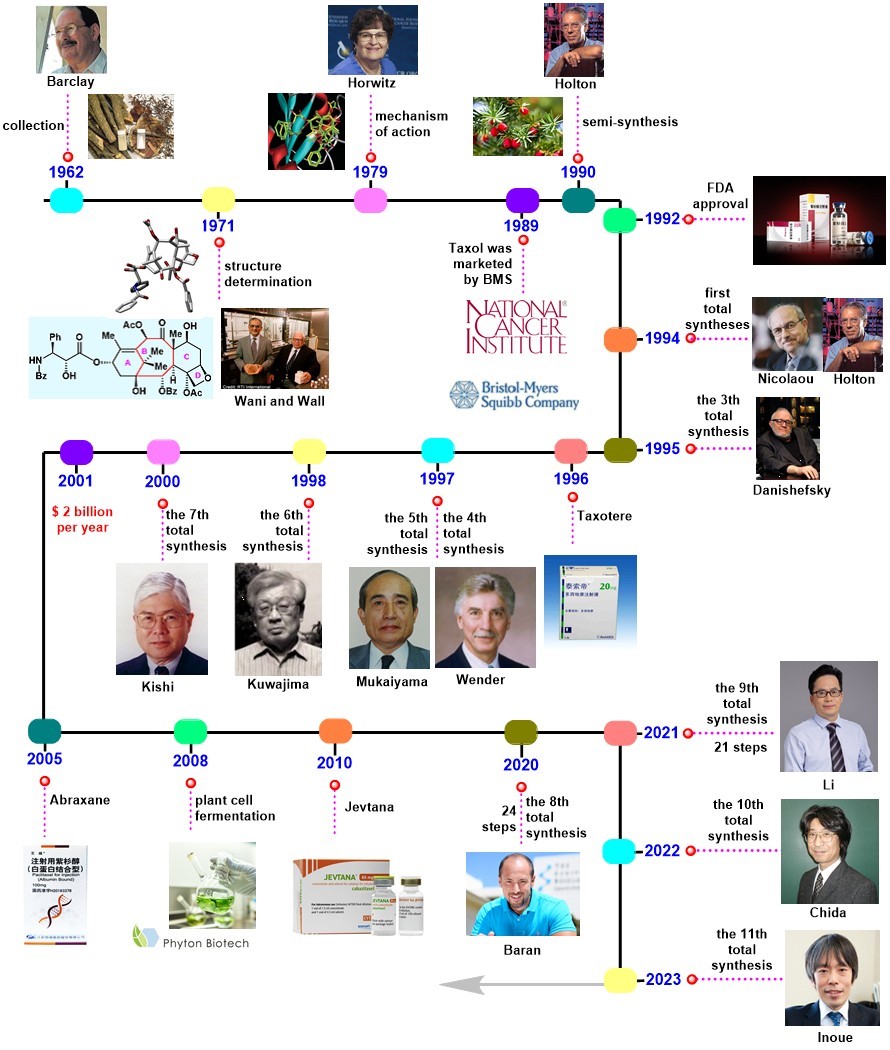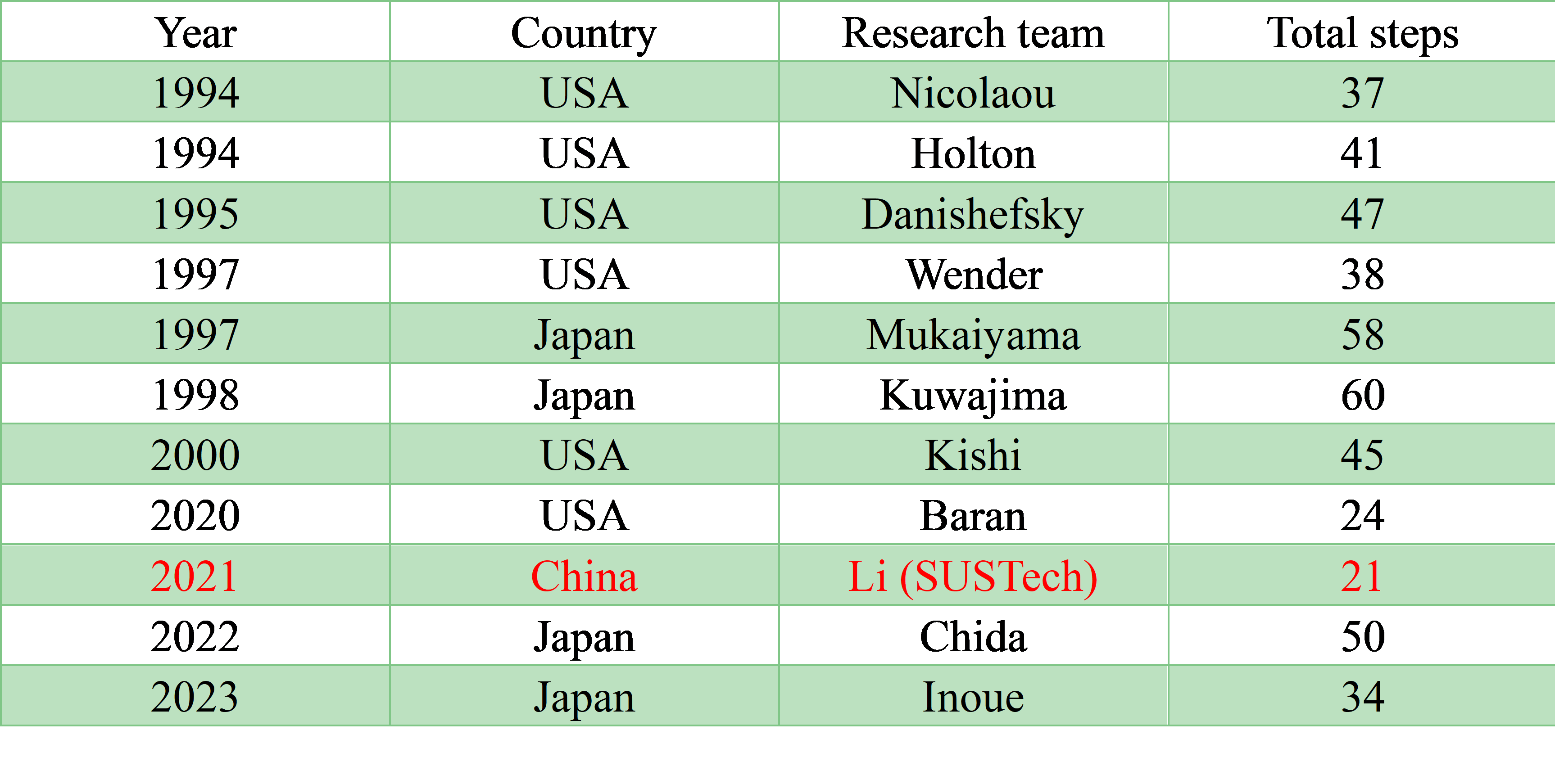Taxol (paclitaxel) is the most well-known and highly oxidized taxane diterpenoid. It was isolated from the stem bark of the Pacific yew tree (Taxus brevifolia), and its structure was fully established by Wani in 1971. Structurally, Taxol possesses a highly oxygenated tetracyclic skeleton with a bridged bicyclo[5.3.1] ring system,3−5 which contains a strained anti-Bredt olefin at C11−C126 and features 11 stereocenters, three of which are quaternary.
In 1979, Horwitz discovered the novel mechanism of action of Taxol. It promotes the assembly and stability of microtubules. In 1992, Taxol was approved by the Food and Drug Administration (FDA) in the United States for the treatment of refractory ovarian cancer. Today, Taxol is the most widely prescribed anticancer drug. It is used to treat a broad range of cancers, including ovarian, breast, lung, and prostate cancer, Kaposi’s sarcoma, squamous cell carcinoma of the head and neck, bladder cancer, esophageal cancer, gastric cancer, and other carcinomas.

Professor Chuang-Chaung Li’s research group from the Department of Chemistry at the Southern University of Science and Technology (SUSTech) recently published a review summarizing the development of synthesis toward Taxol from 1994 to 2022, including the evolution of synthetic strategy for accessing this complex molecular scaffold and key lessons learned from such endeavors.
Their article, entitled “Strategies and Lessons Learned from Total Synthesis of Taxol,” has been published in the academic journal Chemical Reviews.
This review is intended to provide a long-overdue appraisal of the great achievements in the total syntheses of Taxol reported in the last few decades (Figure 1). In doing so, the researchers briefly discuss the future of the research in this area.

Figure 1. The key timeline of the development of Taxol

Figure 2. The structure of Taxol (Chemical Reviews)
In this comprehensive review, Prof. Li’s research group has presented all the reported successful syntheses of Taxol, including ten total syntheses (Inoue and co-workers reported the newest total synthesis of Taxol in January 2023), which are summarized in Table 1.

Table 1. Summary of total synthesis of Taxol
Significant advances have been accomplished in the synthesis of Taxol. As discussed above, a number of brilliant synthetic organic chemists (such as Nicolaou, Holton, Danishefsky, Wender, Mukaiyama, Kishi, and Baran) have created 13 successful approaches to access this complex molecule, which was previously considered impossible to make, thus demonstrating the feasibility of de novo total synthesis. All of these synthetic campaigns contributed significantly to the art and science of total synthesis and beyond.
Research Associate Professors Long Min and Jing-Chun Han, and Research Assistant Professor Wen Zhang, all of the Department of Chemistry at SUSTech, are the co-first authors of this paper. Prof. Chuang-Chuang Li is the corresponding author. Doctoral student Chen-Chen Gu and senior research scholar Yun-Peng Zou also made important contributions to this study.
The research was supported by the National Natural Science Foundation of China (NSFC), Shenzhen Bay Laboratory, Science and Technology Key Project of Guangdong Province, and the Shenzhen Science and Technology Innovation Committee.
Paper link: https://pubs.acs.org/doi/10.1021/acs.chemrev.2c00763
To read all stories about SUSTech science, subscribe to the monthly SUSTech Newsletter.
Proofread ByAdrian Cremin, Yingying XIA
Photo By